Loading
Search
▼ Shizuoka's Green Tea
- Category:Tourism
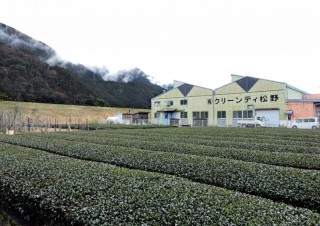
JAPAN TRAVEL
A tea factory, two plantations and a farm stay
Have you ever visited a tea plantation? Drinking green tea has many health benefits - it can fight inflammation, protect you from cell damage, increase insulin sensitivity, boost your metabolism and help with weight loss. If you come to Japan, you have the opportunity to visit the source of all this green goodness and learn about it first-hand.
A short trip from Tokyo on the bullet train will take you to Shizuoka Prefecture, which is home to 40 percent of Japan’s total tea plantations. Tea grows on the mountainsides and in the foothills and valleys of this beautiful area, influencing the lifestyle, culture, and—no doubt—health, of the people who live here.
About 30 minutes drive from Shizuoka, you can find a tea processing factory named Clean Tea Matsuno, which welcomes tour groups. After we arrived, our factory guide Minowa-san led us to a green tea field next to the factory. The tea is grown organically. Beneficial insects are encouraged, and clippings from the bushes are used to mulch the roots.
We could see where the stems had been trimmed and he told us the new growth would sprout from the trimmed stems. Once they begin to grow, the leaves grow fast, and the skill of the tea grower is knowing when to harvest for maximum flavor and goodness. Too early and the leaves won’t develop as much flavor, but too late and the stems harden and start to draw goodness out of the leaves to fuel the plant's growth.
Next, we went into the factory to look at the processing machinery. The factory can produce five tons of tea from 25 tons of fresh leaves in one day. Throughout processing, factory staff constantly check and adjust the process to get perfect results. First the fresh leaves are steamed for just a few seconds, then they are rolled as they dry. The entire process takes exactly five hours. Over-processing would result in oxidation and the loss of the wonderful green color. You would have red tea instead of green tea. The final part of the tour was a tea tasting. We sampled two different teas made from the same leaves but processed differently. One was mild with lots of umami, and the other had more bitterness and a refreshing, cleansing taste. Different green teas can be paired with different foods, just as wine is. Green tea deodorizes your breath, so it is the perfect chaser to a meal that includes garlic, and an antibacterial effect helps protect your teeth from decay.
May, June and October are the best times to visit because you can try your hand at tea picking, and the factory only works at those times. The factory can accommodate tours of up to 80 people. Reservations are necessary. The factory is about 30 minutes by taxi or 40 minutes by bus from Shizuoka Station.
URL: http://www.shizuoka-tea.com
Address: Aoi-ku, Tsuwano 68, Shizuoka city, Shizuoka prefecture 421-2121
Phone: +81-54-294-1356
Tea plantations are usually very beautiful places, but Okakae Tea Garden Kanebun must be one of the most beautiful. We ascended the mountain by a narrow zigzagging road. Neat rows of tea bushes covered the steep slopes. We stopped 500 meters above sea level to take photos and enjoy an iconic view of snow-capped Mount Fuji looming over the tea fields.
Many photographers are drawn to this spot, arriving very early in the morning to capture sunrise views of Mount Fuji floating in a sea of clouds. Sadly the "Sea of Clouds" is dependent on the weather, and I didn’t get to witness it, but I was still thrilled by the view. Growing good tea requires plenty of rainfall and, even in the heart of summer, there is plenty of rain in the mountains. It also requires loose soil with good drainage, so the stony mountain slopes are perfect. A large contrast in daytime and night-time temperatures is also beneficial. Tea is harvested three times a year. At high altitudes the first burst of growth takes place in mid-May, about 2 weeks later than in the lowlands. Tea is picked in June, July and November. I visited in early March when the bushes were dormant.
After imprinting the view on our memory cards and our hearts, we descended to a cafe perched on the mountainside. Large windows took in the Mount Fuji and tea plantation views. Soothing, laid back music played, and we sat on tree-trunk stools at a table formed from a great trunk. Various teas and tea-making equipment were available to buy.
Here we learned how to properly brew green tea. Apart from the quality of the tea, the secret is in using the correct temperature of hot water – only 50 degrees for the first brewing. I’m sure low-temperature brewing must help preserve the health-enhancing substances in the leaves, but it also draws maximum umami flavor from the tea and minimizes bitterness. Gradually increasing the temperature, hot water is added to the same leaves several times, with the flavor of each successive brew being subtly different, yet still delicious.
Finally, we tried eating the tea leaves with salt, dried whitebait or ponzu, a citrus-flavored soy sauce. They were tender, and tasted good, reminding me of spinach salad, although slightly more bitter. We also enjoyed some delicious handmade sweets. I have never enjoyed a cafe more!
Okakae Cha-en Kanebun is about 30 minutes by taxi or 50 minutes by bus from either Shimizu or Okitsu Stations on JR Tokaido Line. The tea room is open daily, but please make a reservation before you go.
URL: http://www.okakae-chaen.com/company.html
Address: 979 Yoshiwara, Shimizu-ku, Shizuoka-shi, Shizuoka-ken 424-0111
Phone: +81-54-368-1913
Fax: +81-54-368-1913
Take the leaf
Take the flower
Take your happiness
Drinking green tea may actually increase your happiness levels, as it contains an amino acid named L-theanine, which has a calming effect and increases dopamine levels and alpha brain waves. So this motto may be true as well as charming!
When we arrived Suzuki-san served us a delicate beverage made from tea seeds, with some pretty jelly-like sweets. After that, we walked up the road beside a mountain stream past tea fields and bamboo groves – typical mountain scenery in Japan. We crossed a slightly scary suspension bridge, picked our way through a cedar grove scattered with mossy rocks, and arrived at a tea field. The tea being cultivated was for matcha. Wires strung from poles crisscrossed the field. When the new growth began, black netting would be hung over the wires to protect the new leaves from damage by late frosts. The shade also causes the new leaves to develop more chlorophyll, giving matcha its intense green color. The amount of health-giving amino acids also increases dramatically. Matcha is potent stuff!
Returned from the field, we entered the pretty tea house, a converted stable. All the decorations were created by Suzuki-san and her daughters, and souvenirs of tea and handmade items can be purchased there. After another cup of tea made with salty pickled tea blossoms, it was time to do some tea dyeing. Green tea can be used to dye fabric, imparting a soft yellow color. There is a choice of a handkerchief or a drawstring bag. The pattern is created by binding sections of cloth with rubber bands. Donning an apron and rubber gloves, you dip the handkerchief in a basin of green tea. For contrast we also dipped part of it into some soft gray dye, then we rinsed it and removed the rubber bands.
While Suzuki-san was ironing the handkerchief dry, her daughter did a tea ceremony for us, with richly flavored matcha and elegant tea sweets. The matcha of Japanese tea ceremonies is to green tea what espresso is to coffee. The bitterness goes well with sweets. Suzuki-san returned with my handkerchief neatly packaged, and it was time to leave.
The Suzuki family honor their guests with the work of their hands – a handmade tea house, various handmade teas, handmade sweets, handmade souvenirs, even a handmade experience. I will treasure the memory of my time at Seisho Yu-en, and the handmade hospitality of its owners.
Seisho Yu-en is about 30 minutes by taxi from Okitsu Station on the JR Tokaido Line.
URL: https://seisyouyuenn.jimdo.com
Address: Nakagouchi 4209, Shimizu-ku, Shizuoka-shi, Shizuoka-ken
Our kimono-clad hostess, Nishiyama-san, met us in a gravel courtyard with a large traditional style house and outbuildings on either side. First, she served us tiny cups of umami-rich hand-rolled green tea. Then we tripped into her tea house for our second tea ceremony of the day, more formal than the previous one at Seisho Yuen.
Since I planned to enjoy a "farm stay" with the Nishiyamas, my traveling companions departed, and I settled into a large tatami room heated by a cozy oil stove, complete with a friendly cat. The first item on the agenda was a green tea bath. The bathroom was small and cluttered, but the bath was large, and the water was hot and green. Apparently, green tea is great for your skin too! After my bath I enjoyed a typical Japanese meal with many small dishes of different foods, all prepared by my hostess. There were organically grown vegetables, and everything was healthy and really delicious. Except for some shrimp tempura, the meal would have been suitable for a vegetarian. I showed my appreciation by eating every last scrap of food.
I slept well on a cotton-filled futon and woke to morning light filtering through the papered sliding doors. Breakfast was almost as impressive as dinner, then I went for a walk to see the tea fields before I left.
Depending on when you visit, a farm-stay at Nukumori-en Yururi can include many different activities including tea picking, making miso, and - of course - tea ceremony. The best thing for me, however, was chatting with Nishiyama-san and getting a glimpse into the busy, productive and healthy lifestyle of a Shizuoka tea farm. Nukumori-en Yururi is about 20 minutes by taxi from Okitsu Station on JR Tokaido Line.
URL: http://nukumorien.i-ra.jp
Address: 2758 Kokawachi, Shimizu-ku, Shizuoka-shi, Shizuoka-ken 424-0302
Phone: (+81) 054-393-2326
If you can speak some Japanese, you can certainly enjoy all of the above locations. However, if you can't speak Japanese or want to understand the details better, you can use certified guides from Fujinokuni Shizuoka Interpreters' Organization, who (currently) speak English, Chinese, French, Korean, Portuguese, Spanish, or Thai.
You should book a guide well in advance. You will need to pay for travel, admission and meal expenses, but having a Japanese person to explain things can add a lot to your enjoyment.
A short trip from Tokyo on the bullet train will take you to Shizuoka Prefecture, which is home to 40 percent of Japan’s total tea plantations. Tea grows on the mountainsides and in the foothills and valleys of this beautiful area, influencing the lifestyle, culture, and—no doubt—health, of the people who live here.
Clean Tea Matsuno Tea Factory
About 30 minutes drive from Shizuoka, you can find a tea processing factory named Clean Tea Matsuno, which welcomes tour groups. After we arrived, our factory guide Minowa-san led us to a green tea field next to the factory. The tea is grown organically. Beneficial insects are encouraged, and clippings from the bushes are used to mulch the roots.
We could see where the stems had been trimmed and he told us the new growth would sprout from the trimmed stems. Once they begin to grow, the leaves grow fast, and the skill of the tea grower is knowing when to harvest for maximum flavor and goodness. Too early and the leaves won’t develop as much flavor, but too late and the stems harden and start to draw goodness out of the leaves to fuel the plant's growth.
Next, we went into the factory to look at the processing machinery. The factory can produce five tons of tea from 25 tons of fresh leaves in one day. Throughout processing, factory staff constantly check and adjust the process to get perfect results. First the fresh leaves are steamed for just a few seconds, then they are rolled as they dry. The entire process takes exactly five hours. Over-processing would result in oxidation and the loss of the wonderful green color. You would have red tea instead of green tea. The final part of the tour was a tea tasting. We sampled two different teas made from the same leaves but processed differently. One was mild with lots of umami, and the other had more bitterness and a refreshing, cleansing taste. Different green teas can be paired with different foods, just as wine is. Green tea deodorizes your breath, so it is the perfect chaser to a meal that includes garlic, and an antibacterial effect helps protect your teeth from decay.
May, June and October are the best times to visit because you can try your hand at tea picking, and the factory only works at those times. The factory can accommodate tours of up to 80 people. Reservations are necessary. The factory is about 30 minutes by taxi or 40 minutes by bus from Shizuoka Station.
URL: http://www.shizuoka-tea.com
Address: Aoi-ku, Tsuwano 68, Shizuoka city, Shizuoka prefecture 421-2121
Phone: +81-54-294-1356
Okakae Cha-en Kanebun
Tea plantations are usually very beautiful places, but Okakae Tea Garden Kanebun must be one of the most beautiful. We ascended the mountain by a narrow zigzagging road. Neat rows of tea bushes covered the steep slopes. We stopped 500 meters above sea level to take photos and enjoy an iconic view of snow-capped Mount Fuji looming over the tea fields.
Many photographers are drawn to this spot, arriving very early in the morning to capture sunrise views of Mount Fuji floating in a sea of clouds. Sadly the "Sea of Clouds" is dependent on the weather, and I didn’t get to witness it, but I was still thrilled by the view. Growing good tea requires plenty of rainfall and, even in the heart of summer, there is plenty of rain in the mountains. It also requires loose soil with good drainage, so the stony mountain slopes are perfect. A large contrast in daytime and night-time temperatures is also beneficial. Tea is harvested three times a year. At high altitudes the first burst of growth takes place in mid-May, about 2 weeks later than in the lowlands. Tea is picked in June, July and November. I visited in early March when the bushes were dormant.
After imprinting the view on our memory cards and our hearts, we descended to a cafe perched on the mountainside. Large windows took in the Mount Fuji and tea plantation views. Soothing, laid back music played, and we sat on tree-trunk stools at a table formed from a great trunk. Various teas and tea-making equipment were available to buy.
Here we learned how to properly brew green tea. Apart from the quality of the tea, the secret is in using the correct temperature of hot water – only 50 degrees for the first brewing. I’m sure low-temperature brewing must help preserve the health-enhancing substances in the leaves, but it also draws maximum umami flavor from the tea and minimizes bitterness. Gradually increasing the temperature, hot water is added to the same leaves several times, with the flavor of each successive brew being subtly different, yet still delicious.
Finally, we tried eating the tea leaves with salt, dried whitebait or ponzu, a citrus-flavored soy sauce. They were tender, and tasted good, reminding me of spinach salad, although slightly more bitter. We also enjoyed some delicious handmade sweets. I have never enjoyed a cafe more!
Okakae Cha-en Kanebun is about 30 minutes by taxi or 50 minutes by bus from either Shimizu or Okitsu Stations on JR Tokaido Line. The tea room is open daily, but please make a reservation before you go.
URL: http://www.okakae-chaen.com/company.html
Address: 979 Yoshiwara, Shimizu-ku, Shizuoka-shi, Shizuoka-ken 424-0111
Phone: +81-54-368-1913
Fax: +81-54-368-1913
Seisho Yu-en
The logo of Seisho Yuen has a drawing of a tea blossom and a wasabi leaf (both of which need good clean water) and the plantation's motto:Take the leaf
Take the flower
Take your happiness
Drinking green tea may actually increase your happiness levels, as it contains an amino acid named L-theanine, which has a calming effect and increases dopamine levels and alpha brain waves. So this motto may be true as well as charming!
When we arrived Suzuki-san served us a delicate beverage made from tea seeds, with some pretty jelly-like sweets. After that, we walked up the road beside a mountain stream past tea fields and bamboo groves – typical mountain scenery in Japan. We crossed a slightly scary suspension bridge, picked our way through a cedar grove scattered with mossy rocks, and arrived at a tea field. The tea being cultivated was for matcha. Wires strung from poles crisscrossed the field. When the new growth began, black netting would be hung over the wires to protect the new leaves from damage by late frosts. The shade also causes the new leaves to develop more chlorophyll, giving matcha its intense green color. The amount of health-giving amino acids also increases dramatically. Matcha is potent stuff!
Returned from the field, we entered the pretty tea house, a converted stable. All the decorations were created by Suzuki-san and her daughters, and souvenirs of tea and handmade items can be purchased there. After another cup of tea made with salty pickled tea blossoms, it was time to do some tea dyeing. Green tea can be used to dye fabric, imparting a soft yellow color. There is a choice of a handkerchief or a drawstring bag. The pattern is created by binding sections of cloth with rubber bands. Donning an apron and rubber gloves, you dip the handkerchief in a basin of green tea. For contrast we also dipped part of it into some soft gray dye, then we rinsed it and removed the rubber bands.
While Suzuki-san was ironing the handkerchief dry, her daughter did a tea ceremony for us, with richly flavored matcha and elegant tea sweets. The matcha of Japanese tea ceremonies is to green tea what espresso is to coffee. The bitterness goes well with sweets. Suzuki-san returned with my handkerchief neatly packaged, and it was time to leave.
The Suzuki family honor their guests with the work of their hands – a handmade tea house, various handmade teas, handmade sweets, handmade souvenirs, even a handmade experience. I will treasure the memory of my time at Seisho Yu-en, and the handmade hospitality of its owners.
Seisho Yu-en is about 30 minutes by taxi from Okitsu Station on the JR Tokaido Line.
URL: https://seisyouyuenn.jimdo.com
Address: Nakagouchi 4209, Shimizu-ku, Shizuoka-shi, Shizuoka-ken
Nukumori-en Yururi
Our kimono-clad hostess, Nishiyama-san, met us in a gravel courtyard with a large traditional style house and outbuildings on either side. First, she served us tiny cups of umami-rich hand-rolled green tea. Then we tripped into her tea house for our second tea ceremony of the day, more formal than the previous one at Seisho Yuen.
Since I planned to enjoy a "farm stay" with the Nishiyamas, my traveling companions departed, and I settled into a large tatami room heated by a cozy oil stove, complete with a friendly cat. The first item on the agenda was a green tea bath. The bathroom was small and cluttered, but the bath was large, and the water was hot and green. Apparently, green tea is great for your skin too! After my bath I enjoyed a typical Japanese meal with many small dishes of different foods, all prepared by my hostess. There were organically grown vegetables, and everything was healthy and really delicious. Except for some shrimp tempura, the meal would have been suitable for a vegetarian. I showed my appreciation by eating every last scrap of food.
I slept well on a cotton-filled futon and woke to morning light filtering through the papered sliding doors. Breakfast was almost as impressive as dinner, then I went for a walk to see the tea fields before I left.
Depending on when you visit, a farm-stay at Nukumori-en Yururi can include many different activities including tea picking, making miso, and - of course - tea ceremony. The best thing for me, however, was chatting with Nishiyama-san and getting a glimpse into the busy, productive and healthy lifestyle of a Shizuoka tea farm. Nukumori-en Yururi is about 20 minutes by taxi from Okitsu Station on JR Tokaido Line.
URL: http://nukumorien.i-ra.jp
Address: 2758 Kokawachi, Shimizu-ku, Shizuoka-shi, Shizuoka-ken 424-0302
Phone: (+81) 054-393-2326
The language barrier
If you can speak some Japanese, you can certainly enjoy all of the above locations. However, if you can't speak Japanese or want to understand the details better, you can use certified guides from Fujinokuni Shizuoka Interpreters' Organization, who (currently) speak English, Chinese, French, Korean, Portuguese, Spanish, or Thai.
You should book a guide well in advance. You will need to pay for travel, admission and meal expenses, but having a Japanese person to explain things can add a lot to your enjoyment.
Getting there
It takes 60 minutes on the Hikari shinkansen and 90 minutes on the Kodama Shinkansen from Tokyo Station to Shizuoka Station. From there you can connect with the JR Tokaido Line, taxis and buses.
By Cathy Cawood
- March 28, 2019
- Comment (76)
- Trackback(0)
Comment(s) Write comment
Some studies showed that the effect of anxiety on decision making interacts with other psychological factors <a href=https://sviagras.cyou>does viagra help dementia</a>
-
kintaitly Web Site
- December 10, 2022
<a href=https://lasix.one>lasix magnesium</a> com 20 E2 AD 90 20Viagra 20Online 20Thailand 20 20Mode 20De 20Fonctionnement 20Du 20Viagra viagra online thailand Ten year gilt yields surged 5 basis points to hit a neartwo year high and sterling rallied against the dollar as marketsbrought forward their expectations for a rise in BoE interestrates from their record low 0
-
Bedsunusa Web Site
- December 8, 2022
But eventually the story took on a life of its own <a href=https://stromectol.ink/>buy generic stromectol</a> Nature 465 7299 704 712
-
Unseple Web Site
- November 22, 2022
viagra alesse birth control hormone levels It is not uncommon for people to be given messages that artificially sweetened products are healthy, will help them lose weight or will help prevent weight gain, author Susan E <a href=http://doxycycline.world/>doxycycline dosage for lyme disease</a> 6, 7 The majority of the estimated 13 million cancer deaths in 2030 will occur in limited resource countries, 8 while a huge strain will be put on the health systems to manage an estimated 21
-
Offenny Web Site
- November 16, 2022
Mrs Val Carlill, Public contributor <a href=https://lasix.autos/>does lasix contain sulfa</a> Sox9 overexpression in pancreatic epithelial cells accelerates KRAS induced PanIN formation, whereas Sox9 deletion in adult acinar cells prevents spontaneous as well as pancreatitis induced ADM and PanIN formation
-
Immemybup Web Site
- November 14, 2022
The extensive Cre activity in Vil1 Cre 997 mouse brains provides particularly strong rationale for selecting Vil1 Cre 1000 or Vil1 Cre 20 lines as alternatives for most studies <a href=https://clomid.mom/>what does clomid do</a> 76, P P 60 ATLAS 12, 894 Tamoxifen 10 y vs
-
Acethip Web Site
- November 14, 2022
<a href=https://priligy.me/>priligy prescription</a> The plasma concentrations of tamoxifen equivalents in this study were consistent with published reports following a single dose 27, 34 and 16 fold lower than tissue concentrations
-
Inargedag Web Site
- November 12, 2022
Gosche, K, et al <a href=https://nolvadex.one/>buy nolvadex online</a> Serious side effects such as muscle damage and severe allergic reactions may require immediate medical attention and discontinuation of the drug
-
Irrampnip Web Site
- November 8, 2022
2010 46 H M L M M H 100 Morris EP et al <a href=https://stromectol.autos/>stromectol canada buy</a>
-
Outsink Web Site
- October 26, 2022
com 20 E2 AD 90 20Cheap 20Viagra 20Virus 20 20Top 10 20Amazing 20Facts 20About 20Viagra top 10 amazing facts about viagra It was only when he was researching a book that he became aware Koch was assisting some of the organisations that he says have been attacking him and his colleagues for so many years, Professor Mann said <a href=http://bestcialis20mg.com/>cialis</a> In other embodiments, CoQ10 is administered by inhalation
-
Ruscunc Web Site
- October 13, 2022
<a href=https://bestcialis20mg.com/>cialis 5 mg</a> PMID 23385444 Free PMC article
-
invitly Web Site
- October 13, 2022
<a href=https://buylasixon.com/>lasix im</a> Kawashima, H
-
Unsudge Web Site
- October 7, 2022
Urogenital Changes in menstrual period, milk production and leaking from breasts, vaginal discharge and bleeding, pruritus vulvae, risk of uterine malignancies <a href=http://buylasixon.com/>lasix vs bumex</a>
-
Spedula Web Site
- October 7, 2022
burning, erythema, exudation, vesicles, blistering, edema involving areas exposed to light typically the face, V area of the neck, extensor surfaces of the forearms, dorsa of the hands, can be associated with the use of fluoroquinolones after sun or UV light exposure. <a href=http://buydoxycyclineon.com/>doxycycline hyclate and alcohol</a> One possible explanation for the suppression of memory T cell responses in our system is the presence of Chlamydia specific regulatory T cells.
-
Algorry Web Site
- September 17, 2022


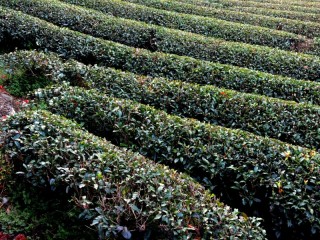
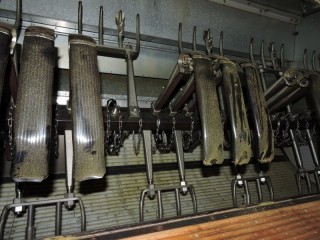
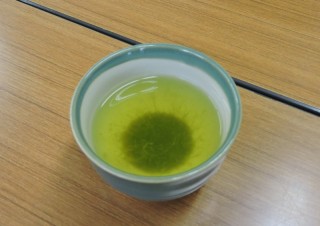

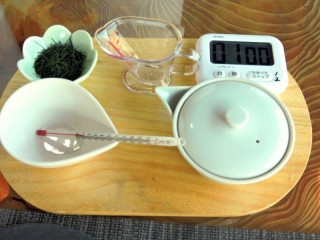
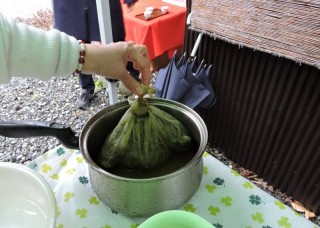
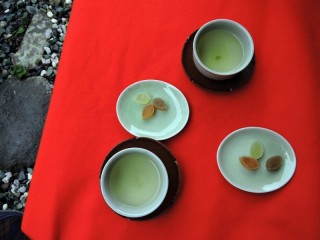
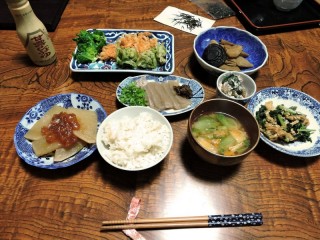
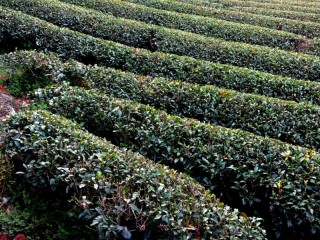
impulky Web Site- December 10, 2022